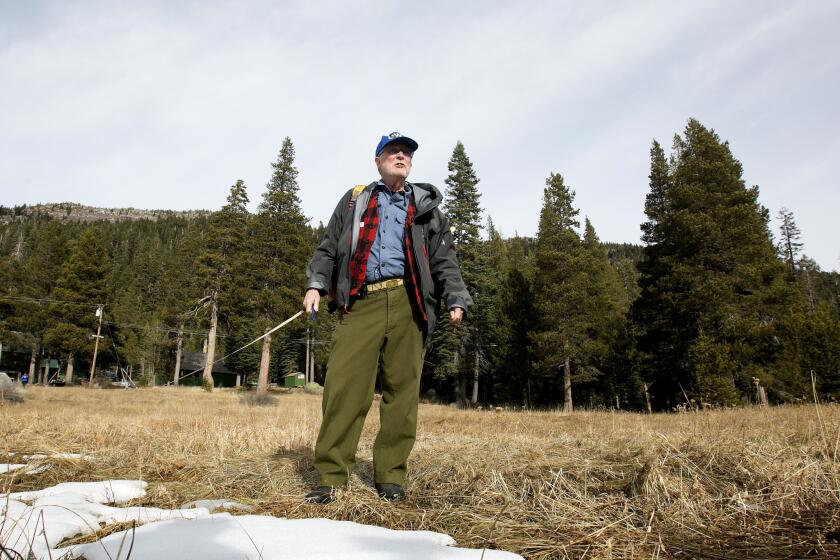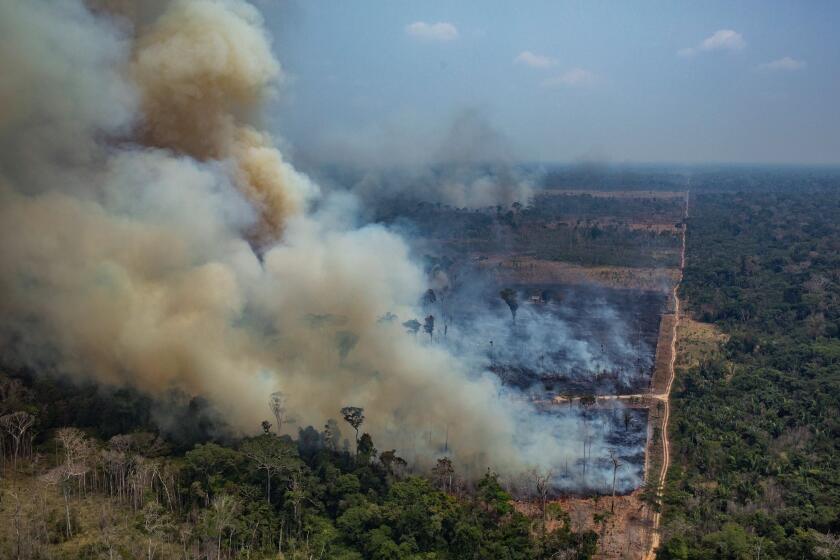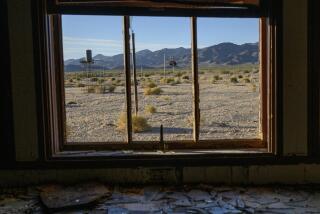Earth’s warming is closing in on a crucial limit, U.N. report says

- Share via
The warming world is getting closer to passing a temperature limit set by global leaders five years ago and may exceed it in the next decade or so, according to a new United Nations report.
In the next five years, the planet has nearly a 1-in-4 chance of experiencing a year that’s hot enough to put the global temperature at 2.7 degrees Fahrenheit, or 1.5 degrees Celsius, above pre-industrial times, according to a new science update released Wednesday by the U.N., the World Meteorological Organization and other global science groups.
That 1.5 degrees Celsius is the more stringent of two limits set in 2015 by world leaders in the Paris climate change agreement. A 2018 U.N. science report said a world hotter than that would still survive, but the chances of dangerous problems increase tremendously.
The new report comes on the heels of a weekend of weather gone wild around the U.S.: scorching heat, record California wildfires and two more Atlantic storms that set records for earliest 16th and 17th named storms.
Earlier this year, Death Valley hit 130 degrees and Siberia hit 100 degrees.
Temperatures are expected to reach 118 degrees in Woodland Hills, 114 in Pasadena, 112 in Burbank and 110 in Simi Valley on Saturday and Sunday.
The warming that has already occurred has “increased the odds of extreme events that are unprecedented in our historical experience,” said Stanford University climate scientist Noah Diffenbaugh.
For example, historical global warming has increased the odds of record-setting extremes of heat around more than 80% of the globe, and has “doubled or even tripled the odds over the region of California and the Western U.S. that has experienced record-setting heat in recent weeks,” Diffenbaugh said.
The planet already has warmed nearly 2 degrees F, or 1.1 degrees C, since the late 1800s, and the last five years are hotter than the previous five years, the report said. That acceleration may or may not be temporary; there’s both man-made warming and natural warming from a strong El Niño weather pattern in the past five years, said World Meteorological Organization Secretary-General Petteri Taalas.
“The probability of 1.5 degrees [Celsius] is growing year by year,” Taalas said. “It’s very likely to happen in the next decade if we don’t change our behavior.”
That’s potentially faster than what the 2018 U.N. report found: that the world was likely to hit 1.5 degrees sometime between 2030 and 2052.
Breakthrough Institute climate scientist Zeke Hausfather, who wasn’t involved in the new report, said the document was a good update of what scientists already knew.
It is “abundantly clear that rapid climate change is continuing and the world is far from on track” toward meeting the Paris climate goals, he said.
Back in 1989, Californians received a sobering warning: The accumulation of heat-trapping gases in the atmosphere would likely bring more droughts, floods, fires, and heat waves to the state.
Some countries, including the U.S. and many in Europe, are reducing emissions of heat-trapping carbon dioxide, but Taalas said the world was on a path that would be 5.4 degrees F (or 3 degrees C) warmer than it was in the late 19th century. That would exceed the Paris accord’s less stringent target of 2 degrees C.
The latest report was the U.N.’s annual update on “climate disruption” caused by the burning of coal, oil and gas. It highlighted more than just increasing temperatures and rising sea levels.
“Record heat, ice loss, wildfires, floods and droughts continue to worsen, affecting communities, nations and economies around the world,” United Nations Secretary-General Antonio Guterres wrote in a foreword.
Guterres said big polluting countries, such as China, the United States and India, need to become carbon neutral and stop adding heat-trapping gas to the atmosphere by 2050.
If they don’t, “all the effort will not be enough,” Guterres said at a news conference Wednesday.
Land-grabbers in Brazil are slashing and burning the Amazon rainforest. If too many trees are removed, Earth’s climate could lose a critical buffer.
The report spotlights unprecedented wildfires in the Amazon, the Arctic and Australia. California was fighting record wildfires as the report was issued.
“Drought and heat waves substantially increased the risk of wildfires,” the report said. “The three largest economic losses on record from wildfires have all occurred in the last four years.”
Taalas said these type of climate disasters would continue at least through the 2060s because of the heat-trapping gases already in the air.
Carbon dioxide emissions will be down 4% to 7% this year because of reduced travel and industrial activities during the COVID-19 pandemic, but the heat-trapping gas stays in the air for a century, so the levels in the atmosphere continue to go up, Taalas said. And, he said, so will the warming.
So far, this year is the second-hottest on record and has a 37% chance of surpassing the global record set in 2016, according to the U.S. National Oceanic and Atmospheric Administration.









